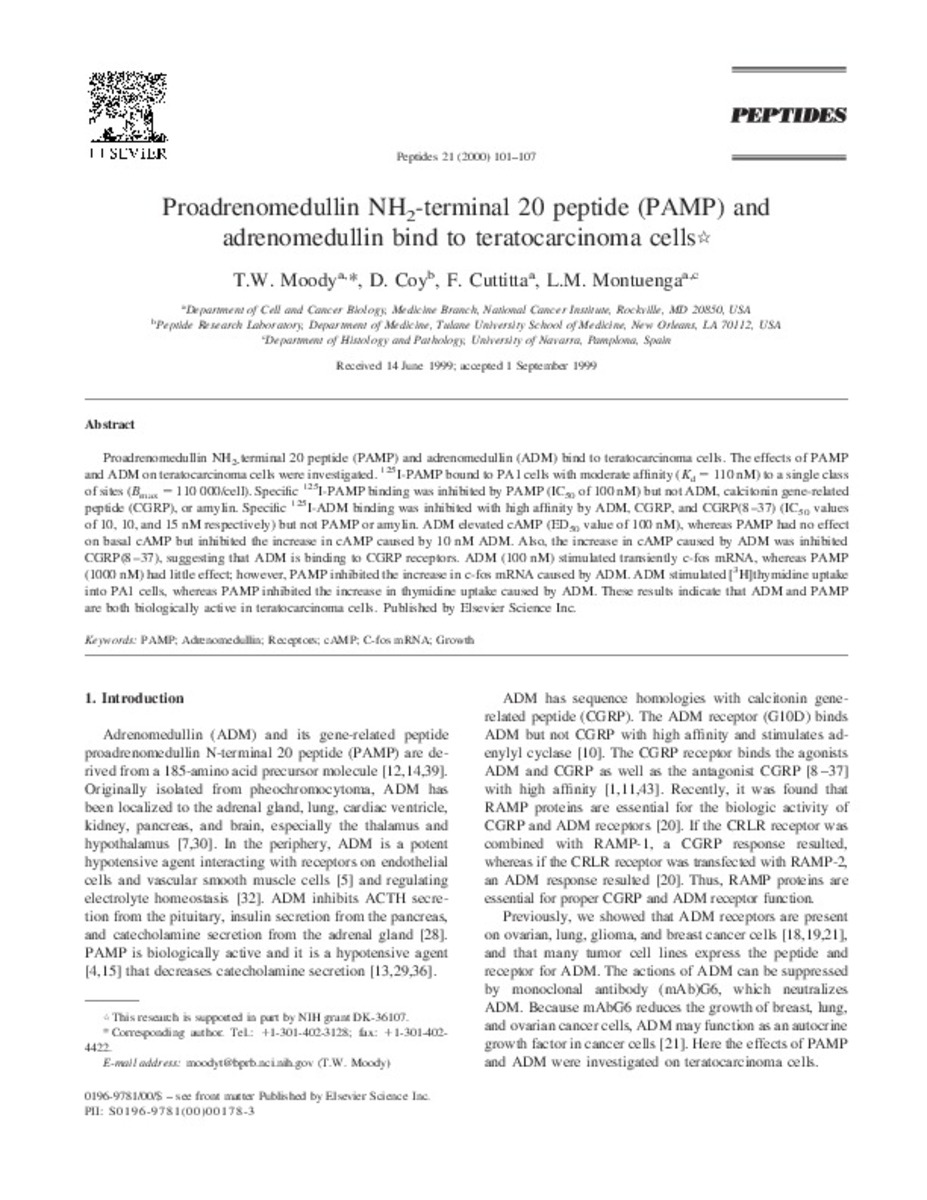Proadrenomedullin NH(2)-terminal 20 peptide (PAMP) and adrenomedullin bind to teratocarcinoma cells.
Files in This Item:
Statistics and impact
Items in Dadun are protected by copyright, with all rights reserved, unless otherwise indicated.










